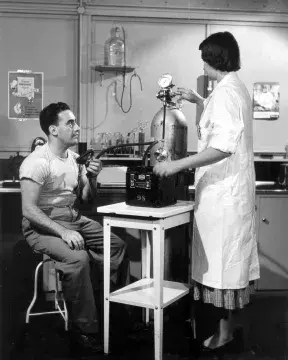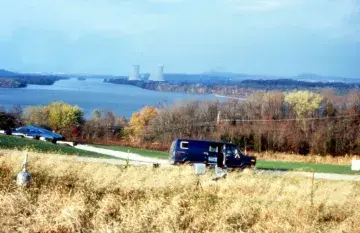Today, I congratulate the National Urban Security Technology Laboratory (NUSTL) on 75 years of service to our nation. NUSTL is America’s principal federal laboratory for first responder technology testing and evaluation and is critical to the solutions the Science and Technology Directorate (S&T) delivers to its stakeholders. Major mission impacts are coded in NUSTL’s DNA and are a function of its historical, yet enduring, role in meeting some of the nation’s most pressing national security and emergency response challenges head-on.

At its core, NUSTL assesses a broad spectrum of technologies used by police, fire, hazmat, emergency medical services and emergency management personnel on the front lines to prevent injuries, save lives and protect property. The lab’s System Assessment and Validation for Emergency Responders (SAVER) program is a one-stop-shop for market research and comparative assessments of commercially-available products to help state and local agencies make informed purchasing decisions for their specific missions. NUSTL uses its home base of New York City as an urban testbed and leverages operationally representative test sites across the country to enable collaboration with a nationally representative pool of first responder disciplines, technology innovators and private industry.
The recent success of the movie "Oppenheimer" brought fresh attention to the devastating impact of nuclear weapons technology, which continues to be a significant threat. The lab we now know as NUSTL traces its roots back to the Manhattan Project, originally formed in 1947 under the Medical Division of the Atomic Energy Commission to serve the massive research effort that led to the development of the atomic bomb. In the 1950’s, the laboratory shifted its focus to address a growing national concern for radioactive fallout from nuclear weapons tests and used a network of monitoring stations for fallout assessments.
In 1977, the lab’s name changed again to the Environmental Measurements Laboratory (EML) and was aligned to the newly established U.S. Department of Energy (DOE). The laboratory’s primary focus back then was to support environmental monitoring for the presence of nuclear materials, including decommissioning, decontamination, and remediation efforts. Following the Three Mile Island and Chernobyl nuclear accidents, EML helped DOE accurately and comprehensively reconstruct the environmental contamination that resulted from these events. It was not until passage of the Homeland Security Act of 2002 and federal agency consolidations that followed 9/11’s devastating terrorist attacks that EML became part of S&T and later renamed to NUSTL.

The lab maintains its historical expertise founded in radiological/nuclear threats and hazards. Today, the products developed by NUSTL’s Radiological/Nuclear Response and Recovery (RNRR) Research & Development (R&D) portfolio include planning guidance and software-based tools to help execute a response to a radiological/nuclear detonation. Inside of NUSTL’s facility, scientists and engineers conduct testing of several different types of radiation detection equipment that’s supplied to law enforcement and HazMat personnel, ensuring their equipment works as designed and alarms when it should.
Throughout its 75-year history, the lab has remained at the forefront of rapidly evolving technology for everyday hazards and the more complex threats that our nation faces. From measuring radioactive fallout during the Cold War to conducting field tests of first responder technologies today, NUSTL’s work plays a vital role in the lives of first responders and the security of the American people.

